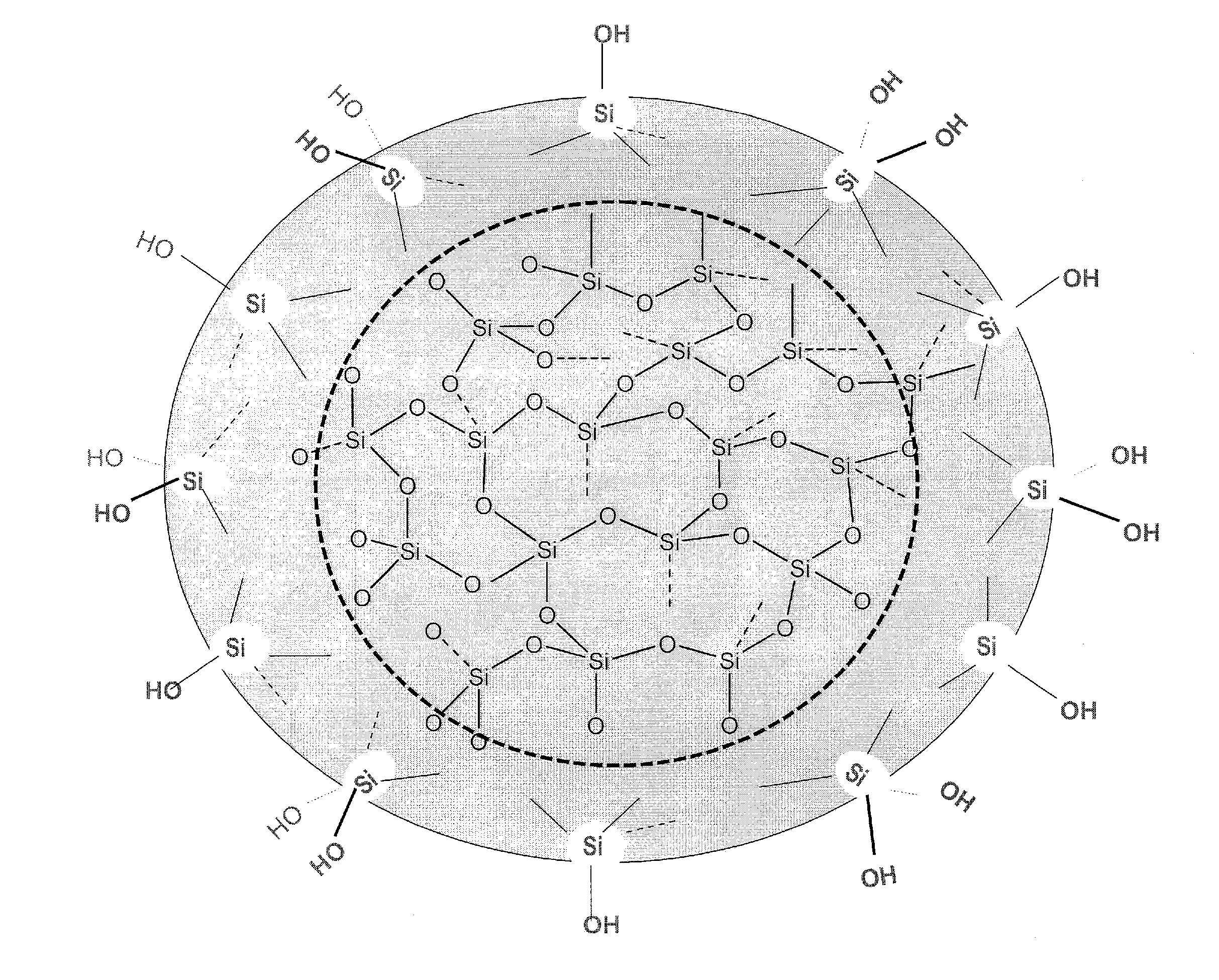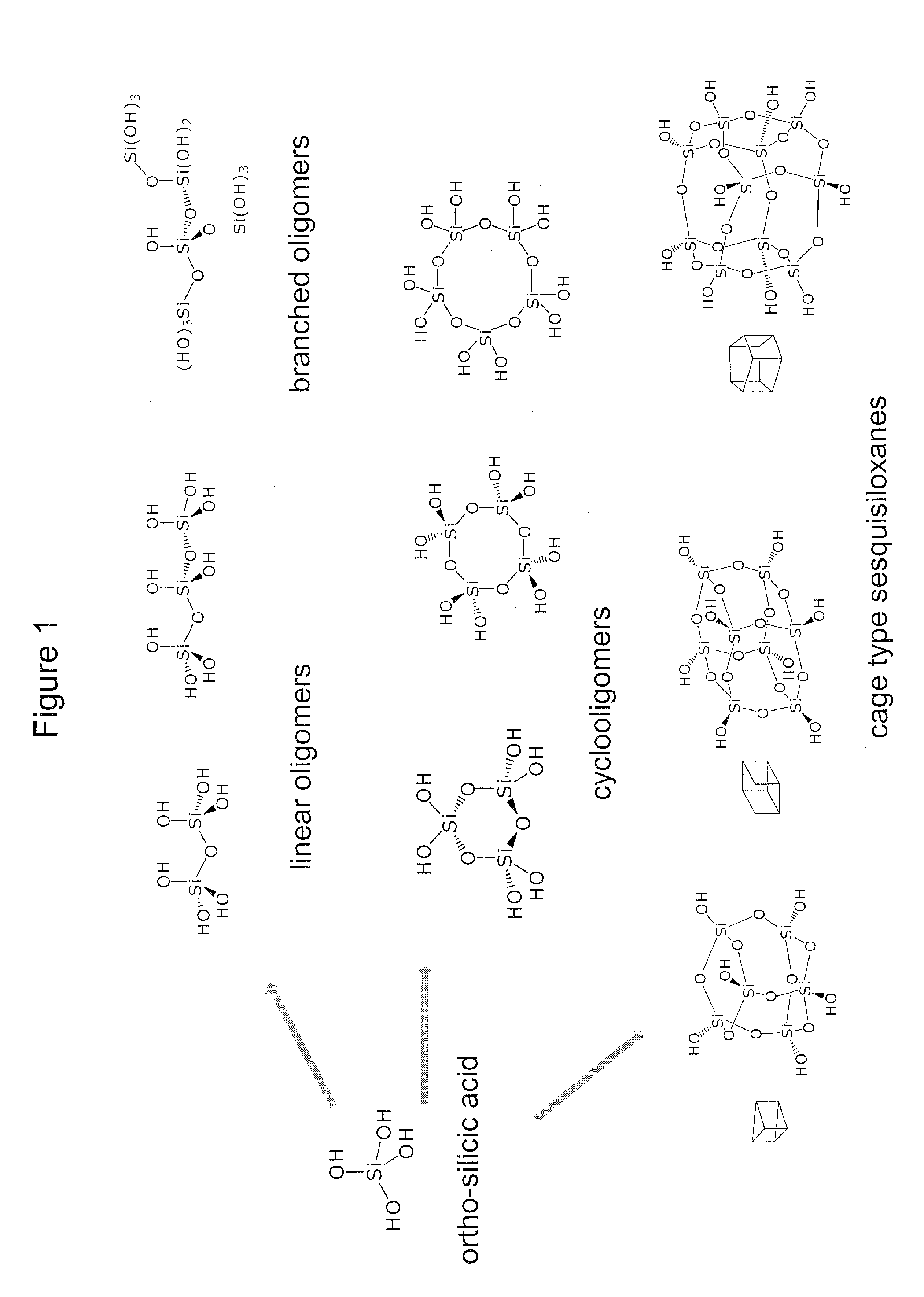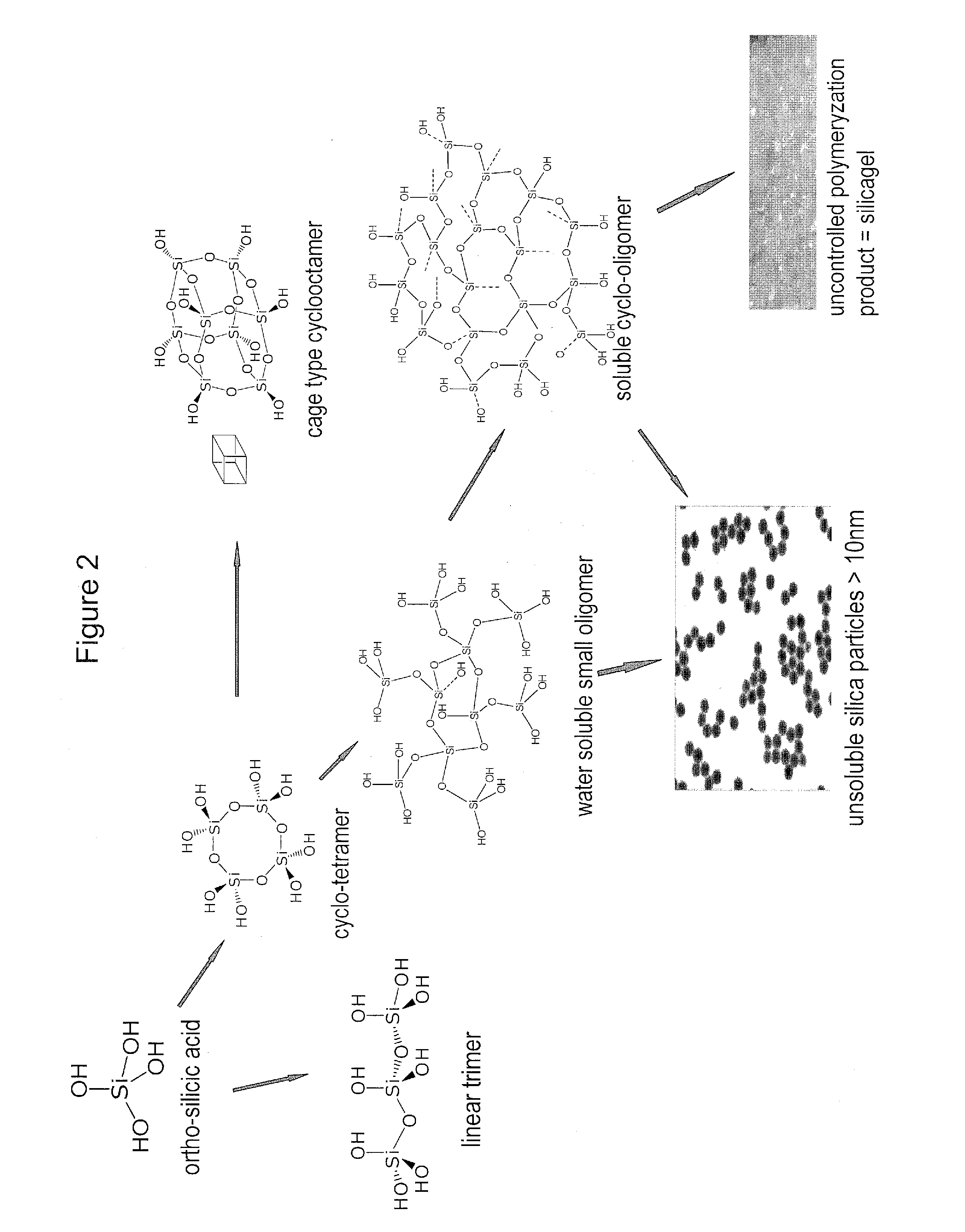Biologically active silicic acid
a silicic acid, biologically active technology, applied in the field of low-molar mass condensed derivatives of silicic acid, can solve the problems of narrowing the therapeutic dose range, limiting the tumor-suppressive action of antibody proteins, and not fully elucidating their mechanism of action and modulation by drug substances
- Summary
- Abstract
- Description
- Claims
- Application Information
AI Technical Summary
Benefits of technology
Problems solved by technology
Method used
Image
Examples
example 1
[0250]Structure of the inventive sub-nano-silicic acid corresponding to the formula Si36O90H36 is disclosed by the ball-stick model on the FIG. 11. Large balls correspond to Si atoms middle to O atoms ant the small white balls to the H atoms.
example 2
[0251]Structure of the inventive sub-nano-silicic acid with the formula Si46O115H46 shown by the space filling model (FIG. 12). Large spheres are Si atoms, middle O and the smalls of white colour are the hydrogens.
example 3
[0252]Structure of an inventive sub-nano-silicic acid with the formula Si42O100H32 is disclosed by the ball-stick model on the FIG. 13. Large balls correspond to Si atoms middle to O atoms ant the small white balls to the H atoms.
PUM
| Property | Measurement | Unit |
|---|---|---|
| diameter | aaaaa | aaaaa |
| diameter | aaaaa | aaaaa |
| temperature | aaaaa | aaaaa |
Abstract
Description
Claims
Application Information
 Login to View More
Login to View More - R&D
- Intellectual Property
- Life Sciences
- Materials
- Tech Scout
- Unparalleled Data Quality
- Higher Quality Content
- 60% Fewer Hallucinations
Browse by: Latest US Patents, China's latest patents, Technical Efficacy Thesaurus, Application Domain, Technology Topic, Popular Technical Reports.
© 2025 PatSnap. All rights reserved.Legal|Privacy policy|Modern Slavery Act Transparency Statement|Sitemap|About US| Contact US: help@patsnap.com



